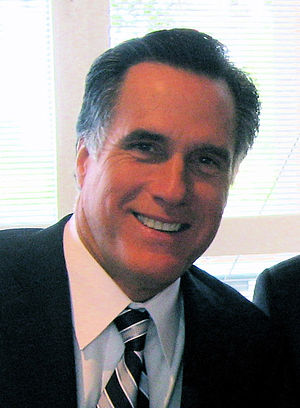
Whole Foods’ distinct—and even radical—approach to reputation management has been key to its success. Will that approach continue to work? We revisited our original case study about Whole Foods and analyzed the company’s online presence.
In January 2013, the Harvard Business Review Press published “Conscious Capitalism: Liberating the Heroic Spirit of Business,” a book examining Whole Foods founder John Mackey’s philosophy and the central role it has played in the grocery chain’s distinct reputation and success. Business management expert Steve Denning also explores the implications of that philosophy in an in-depth Forbes article, but in practice it has involved a very active and innovative approach to reputation management.
While the organic food market continues to grow, Whole Foods has faced reduced earnings and threats from new competition. But the company has succeeded in creating a powerful reputation, and a strong online presence that reflects a large and loyal customer base. The foundations it has laid through effective reputation management, both online and off-, should see it through this difficult period.
Building a unique brand
The central component of Whole Foods’ reputation has been its professed commitment to a “higher purpose.” That is reflected in factors ranging from the company’s longstanding “Declaration of Interdependence” to its ban on unsustainable seafood. One early and important way the company established its reputation was by providing customers with “information and narrative, along with the food.” “It told stories about where the food came from, putting up displays by the seafood counter with photographs and descriptions of the real fishermen who had caught it all,” Nick Paumgarten wrote in his 2010 New Yorker profile of Mackey. Paumgarten also cited the company’s decentralized management structure as a “key contributor to Whole Foods’ success, and to its reputation and self-image as a progressive business,” pointing out that the “high degree of autonomy” of regional divisions and individual stores has fostered “creativity and a sense of ownership.”
The manner in which Whole Foods maintains its core ideals throughout its operations helps explain its strong reputation.
The challenges of managing a distinct reputation
But Whole Foods’ approach is not without its critics. Last February Daily Beast writer Michael Schulson scoffed at Whole Foods’ marketing and image in Whole Foods: America’s Temple of Pseudoscience.
In the New Yorker profile, CEO of dairy company Stonyfield Gary Hirshberg described Mackey as Whole Food’s “greatest asset but also, at times, its greatest challenge.” Mackey’s perspective, principles and personality have been the source of the Whole Foods’ guiding philosophy. But a core challenge for the company—and for Mackey—has been adapting and maintaining its reputation. In 2007 an FTC investigation revealed that Mackey had anonymously attacked a competitor in online financial forums prior to Whole Foods’ offer to buy the company. That led to a realization, Mackey told Nick Paumgarten: “If I wanted to continue to do Whole Foods, there couldn’t be any part of my life that was secretive or hidden or that I’d be embarrassed [about] if people found out about it.”
Radical transparency has served whole foods well
Such radical transparency has generally served Whole Foods well, though there are exceptions, such as Mackey’s 2009 Wall Street Journal op-ed criticizing health care reform, which triggered a social media-fueled boycott. The response to that op-ed may have inspired Mackey to more closely examine the expectations that accompany his business’ progressive reputation. According to a Wall Street Journal article from last February, Whole Foods “doesn’t want to be known as the pricey grocery store for well-heeled, organic-food sophisticates.” So it implemented a “price perception” strategy to counter that reputation.
The outcry didn’t, however, move Mackey to recant his opinion on health care. “So many politicians and CEOs get to be sort of boring, because they end up suppressing any individuality to conform to some phony, inauthentic way of being,” he observed in Paumgarten’s profile. “I’d rather be myself.” Whole Foods posted a response statement on Facebook two days after the publication of the Op-Ed. The response qualified Mackey’s opinions in certain ways, but more importantly, it invited readers to post their opinions on the issue—an excellent example of Whole Foods’ effective use of online reputation management. With it, the company provided the forum for the discussion, while moving its focus from Mackey to the basic issue.
Surviving the storm
How will Whole Foods—and its reputation—weather this period of increased competition?
The financial community, for one, is not sure: CNNMoney assistant managing editor Paul R. La Monica recently described Whole Foods’ stock valuation as “rotting away.” Other analysts do not see increased competition from established brands like Walmart as a major threat: “Though increased competition could force Whole Foods to lower its prices … it is probably a stretch to assume that the upscale clientele normally found at an average Whole Foods store is suddenly going to flock to what is widely recognized as one of the sketchiest big-box retail stores in the country,” writes states Ethan A. Huff in Natural News.
Customer’s commitment to the brand reflected on social media
But what about Whole Foods’ customers? You can sense their commitment to the brand by visiting Whole Foods’ pages on Facebook (1.5 million likes); Twitter (3.72 million followers), Instagram (200,000 followers), Pinterest (191,564 followers) and Google + (60,000+ followers). As with any company’s social media platforms, you can glean insight its business from the nature of customer complaints as well as how they are handled. Nonetheless, one should assume that the most aggressive rants have probably been moved to some digital planet far away, however justified they may be.
Much is reported about the reputations of companies, but to get a balanced sense of consumer sentiment, clear your browser’s history, Google “Whole Foods” and skim the first five pages of results. Then run a comparison check of its competitors – and check out the quality and content of their social media platforms. This is an excellent way to gauge management style and how consumers regard a company.
It is clear that Whole Foods has succeeded in managing its reputation with its consumers, and that its image as a leader in the organic food market remains on firm foundations. As long as it has that strong reputation — its most valuable asset — the company will survive.





